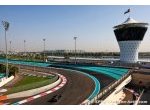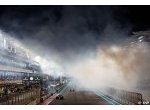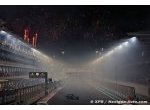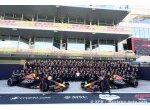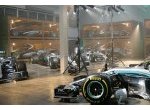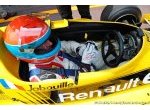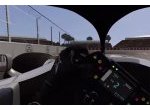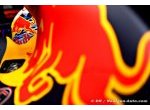Renault RS17 launch - Q&A with Rémi Taffin
Renault Sport Formula One Team Engine Technical Director
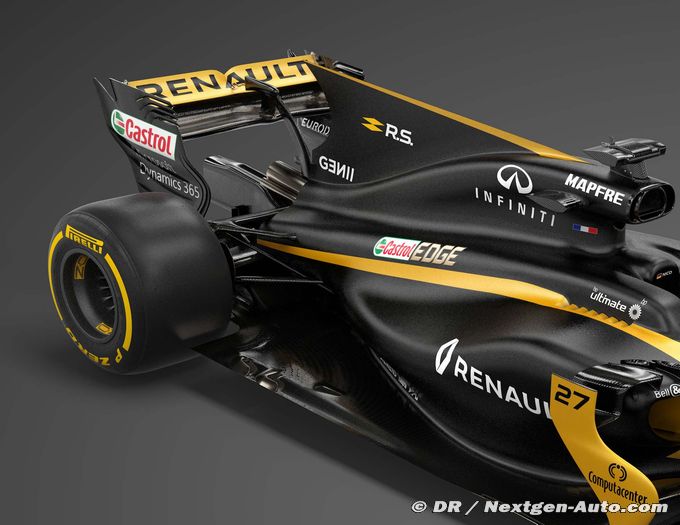
Rémi takes overall responsibility for the Renault power unit developed at the Viry-Châtillon site. Working closely with Nick Chester, Chassis Technical Director, Rémi ensures the team of engineers produce an optimised unit that works in perfect harmony with the chassis.
Rémi joined Renault Sport in 1999, working across Renault’s roll call of clients, including British American Racing, Arrows, Benetton and Renault F1 Team. He has worked directly with two World Champions, Jenson Button and Fernando Alonso, engineering the latter to victory in his two title-winning years.
Rémi stepped up to manage track activities with the creation of Renault Sport F1 in 2011, taking responsibility for the on-track engine performance of Renault Sport F1’s partners. Attending all races and tests throughout the season, Rémi oversaw customer support for the Renault-powered teams and was instrumental in the four world titles secured by Red Bull Racing in the V8 era.
In 2015 he became Director of Operations, managing the teams of engineers and technicians in the dynos and assembly department at Viry and ensuring a smooth transition to track by overseeing the engineers integrated to Renault’s partner teams.
What’s the outlook to the 2017 season?
This is the first car we’ve built as one team with the chassis and the power unit teams both working hand in hand to ensure the chassis can accommodate the power unit as efficiently as possible. There’s been a lot of interaction throughout the design phase of both elements which wasn’t possible with our previous car. It’s highly beneficial to be working in this manner and we’re hoping to see this reflected by our results on track.
What have been the power unit targets?
The first area was integrating the power unit into the chassis, we’ve also worked a lot on the weight, the cooling layout for both power unit and also aerodynamic performance, and then we have targeted a further step forward in performance. On the power unit side we made a good step last year with achieving our targets. We now need to take another step.
What have been the challenges?
We needed to push on every element of the design. We wanted to save weight on the overall package. The MGU, the electrical motors, the battery; these were all areas of particular attention for us. It’s a very demanding process. Weight and integration have been core values of our approach to the R.E.17. Just like with the cooling layout, a gain in one area often comes with accompanying gains in other areas too.
A step in performance from the ICE was targeted too, and with any gain you also increase the severity of impact on the parts, as you’re putting them under greater loads. The ICE architecture is new compared to last year and the implementation is also a bit different.
How much change can be seen in the resulting R.E.17?
If you were able to be part of the team and look at the naked car and could evaluate the architecture, you would be able to see a lot of difference between last year’s unit and its installation and this year’s. The power unit is made to suit the car, and this is a fundamental difference. The engine and the chassis fit together, and not like a puzzle with the R.S.16! The R.S.17 is far more homogeneous.
What are the targets for the year?
Last year we wanted to cut the gap to the best performing power unit on the grid in half whilst becoming the most reliable power unit on the grid, which is something we feel we achieved. For 2017 we want to close the rest of the gap. This is a high target, and the margin performance gains will be hard won. The harder you push for performance the more you encroach on the safety zone for reliability, so it’s a balance which has to be juggled. It’s a battle we relish and which energises everyone.
What’s the development plan through the year?
We have the normal cycle: you have to achieve reliability with the first engines. We test the race-spec engines in Barcelona and this is where we see if the development work done on the bench equates to real world performance and reliability. Since everything is new this year, engine, fuel and lubricant development will progress through the season, and we will target our upgrades to our allowed power unit replacement schedule through the season.
Can you outline the changes at Viry over the past year?
The focus has been on getting greater efficiency and precision out of the existing resources. This has been less about infrastructure but more about processes. It’s well known that we struggled for the first years with the new power unit regulations, but we have demonstrably taken a step forward and we know we have the capability to produce something to challenge the best on the grid.
We’ve increased headcount in certain areas and re-concentrating into the areas of focus. to ensure we have the best people in the correct roles. We wanted to re-energise the team with new people and add to the harmonization of everyone working together, not just at Viry, but with Enstone too.
We have paid particular attention to materials and our inspections and research capability. This is something we have expanded and refocused on. This is beneficial not just in the immediate term, but also longer term and it’s an area where the science and methodology can have crossover to other departments of Renault.
